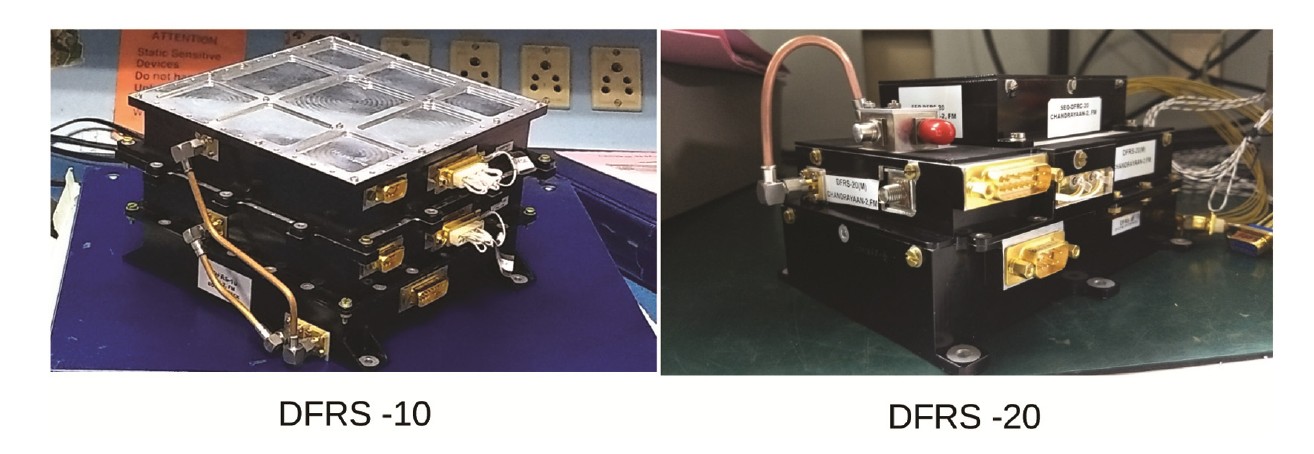RAMBHA-DFRS payload on Chandryaan-2 orbiter

The Radio Anatomy of Moon Bound Hypersensitive Atmosphere and Ionosphere – Dual Frequency Radio Experiment (RAMBHA-DFRS) experiment aboard Chandrayaan-II uses communication channel between Orbiter and ground in Radio Occultation mode to study the temporal evolution of electron density in the Lunar ionosphere. It consists of a highly stable 20 MHz EMXO source, having a stability of the order of 10-11, which generates two coherent signals at X (8496 MHz), and S (2240 MHz) band of radio frequencies. The coherent radio signals, transmitted simultaneously from satellite, and received at ground based deep station network receivers would be used to study temporal and spatial variations in the Lunar ionosphere. the major science objectives of the experiments include, (a) to study the variations in the ionosphere/ atmosphere at Moon, (b) to explore if the Ionosphere at Moon is omnipresent or has episodic appearances and, (c) to confirm the source of the ions in the lunar ionosphere, whether dusty or molecular ions. According to the experiment, every two hours we will get one ingress and then one egress observations.
DFRS payload was developed by Space Physical Laboratory (SPL), Trivandrum with participation from ISTRAC Bangalore U. R. Rao Satellite Centre (URSC) and ISTRAC, Bengaluru.
Hardware is realized as two packages, viz. DFRS 10 which houses the X- and S-band carrier generators, and DFRS 20 which houses the X-band and S-band amplifiers. Figure shows the flight models of DFRS 10 and DFRS 20.